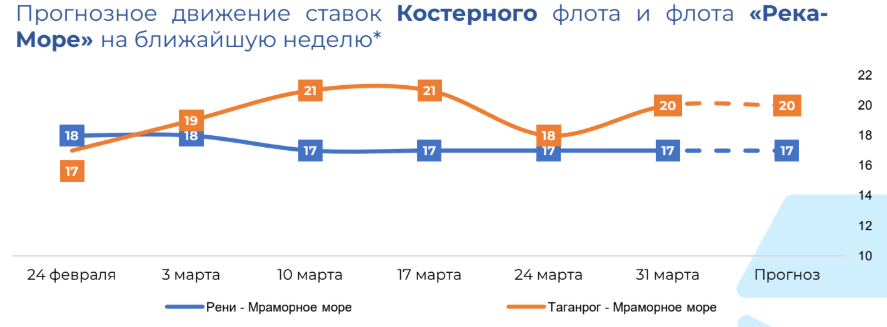The freight market in the Black Sea continues to show weak dynamics. The main reason is limited demand for grain cargoes, despite the recent removal of import duties in Turkey. A high number of available vessels adds pressure on freight rates. Activity in the steel and coal segments remains low, further contributing to market stagnation. Charterers are taking advantage of excess tonnage to keep rates at minimum levels, while shipowners try to maintain existing conditions, although demand remains unstable. Expectations for increased grain exports have not materialized, which further dampens interest in shipping. The outlook for improvement remains low in the short term, as the grain season nears its end and alternative cargo flows remain insufficient.
In the Mediterranean region, the activity of the freight market also remains low. This is especially evident in the fertilizer segment, which traditionally serves as a key driver of demand. Due to the limited volume of available cargo, competition among shipowners is intensifying, preventing any significant rate increases. The situation is further complicated by the upcoming tightening of environmental regulations, which could raise operational costs. With no meaningful changes in grain and metal cargo flows, the market continues to stagnate. The forecast remains cautious. Rising fuel prices may further affect profitability.
In the Sea of Azov, the situation appears more stable. The end of the ice navigation season and improved weather conditions have led to a slight revival of the market. Demand for wheat remains moderate, and rates have increased slightly, although no significant changes in cargo volumes are observed. Charterers continue to take advantage of the situation to maintain low tariffs, while shipowners hope for increased activity in April. A modest rise in rates is possible if grain exports increase, but no major shifts are expected in the near term. Overall, sentiment remains cautious, and the freight market in the region continues to operate under conditions of strong competition and weak demand.

 +380 67 625 91 65
+380 67 625 91 65